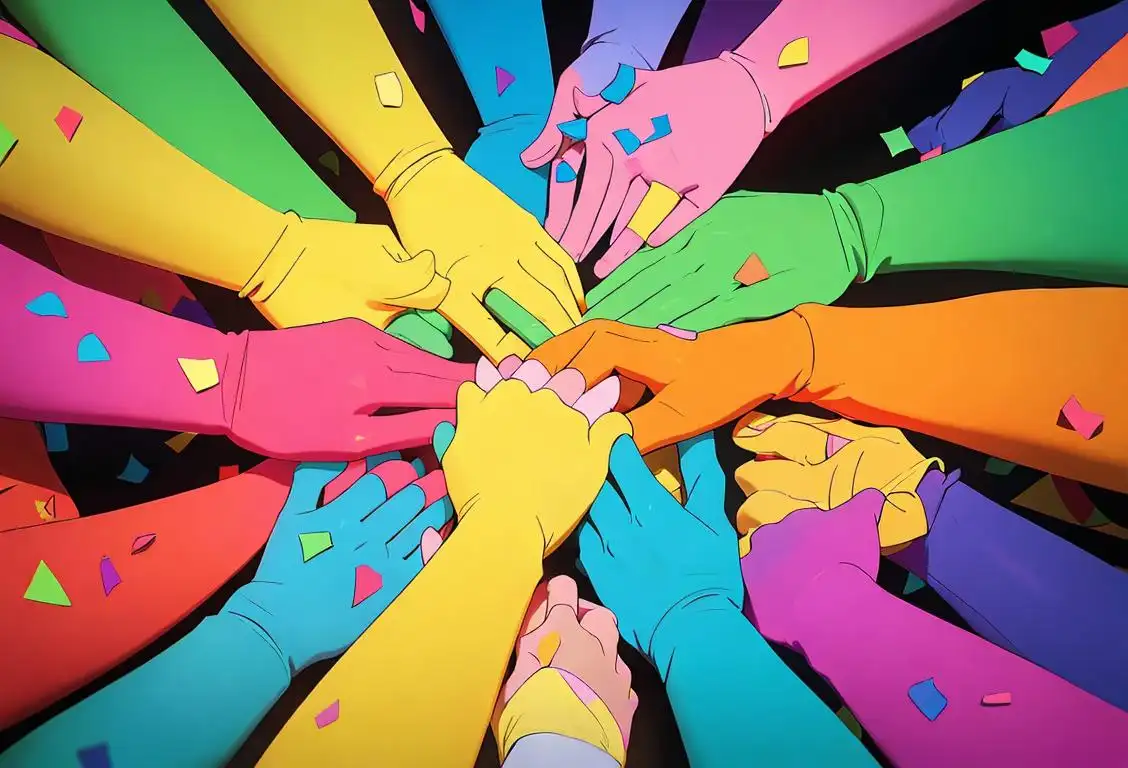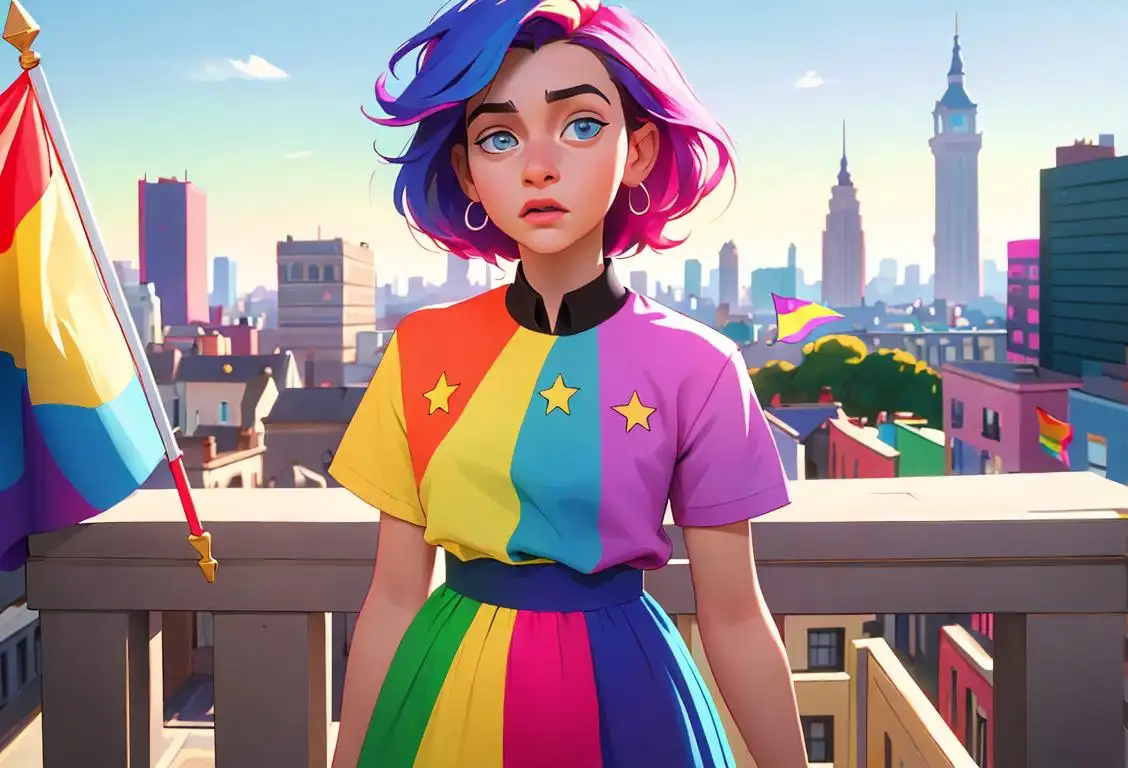National Coming Out Day

Scroll those social media feeds and check those celebratory hashtags folks, it's National Coming Out Day! That's right. A day steeped in the courage, love, authenticity, and sometimes colorful confetti, of individuals taking that big step into their own truth. Let's delve into what's made October 11th an internet sensation!
When is Coming Out Day?
It's national coming out day on the 11th October.
Coming Out to the World Across the Cable Wires
On October 11, 1987, the second National March on Washington for Lesbian and Gay Rights took place and over half a million people marched for equal rights. That key moment in history then evolved into the National Coming Out Day we now recognize, beginning officially in 1988. It's a day to celebrate the challenges overcome and the bravery shown by individuals come out to the world, not just in their own living rooms but across social media, too.
Digital Rainbows Everywhere!
Since social media's integration into our daily lives, National Coming Out Day has proliferated the digital realm. Artful hashtags, Insta stories with rainbow filters, and heartwarming YouTube videos documenting personal coming out stories, spike on this day. Our statistics depict a massive 365,510 mentions online, and it climbed the digital popularity ladder, especially on October 11, 2019.
The Authentic You
Along with its vibrant digital portrayal, the day serves a genuine purpose – encouraging individuals in the LGBTQ+ community to stand in their truth and promote self-love, acceptance, and authenticity. It's a day that goes beyond the 'coming out' aspect and has transformed the conversation into one about acceptance and equality.
More than Just a Trend
While it's important to understand the underlying message rather than just joining in on a trending hashtag, National Coming Out Day is more than just an internet phenomenon. It’s day of support, a day of inclusivity, and a day for the continuation and celebration of love in all its forms.
History behind the term 'Coming Out'
1869
The first recorded use
The term 'coming out' was first recorded in 1869 by Charles H. Ross, who used it in reference to an aristocratic debutante's introduction into society. In his book 'Good Society,' he described the process of young women 'coming out' by making their first appearance at a formal social event, often a ball or a court presentation. This marked their entrance into adult society and their eligibility for marriage.
1920s
Broadening the meaning
In the 1920s, the term 'coming out' started to be used in reference to individuals revealing their true identity or personal secrets. This shift in meaning was particularly seen in the LGBTQ+ community, where 'coming out' signified a person's acknowledgement and disclosure of their sexual orientation or gender identity to their friends, family, and society. It became a way for individuals to embrace their authentic selves and join a community of like-minded people.
1960s
Emergence of the modern LGBTQ+ movement
During the 1960s, the modern LGBTQ+ movement gained momentum, advocating for equal rights and challenging societal norms. 'Coming out' became a pivotal tool in the fight for LGBTQ+ visibility and acceptance. Activists and individuals started to publicly share their stories, aiming to dismantle stereotypes and break down barriers. The concept of coming out as a political and personal act fostered a sense of community and empowerment.
1970s
Coming out into mainstream awareness
In the 1970s, 'coming out' took further steps towards entering mainstream awareness. The term began appearing in popular culture, such as books, plays, and films, that explored the experiences of LGBTQ+ individuals and their journeys of self-discovery and acceptance. This increased representation helped to raise awareness and understanding, fostering greater empathy and support for the LGBTQ+ community.
1990s
Internet and digital revolution
With the rise of the internet and the digital revolution in the 1990s, 'coming out' took on new dimensions. Online platforms provided an opportunity for individuals to connect and share their experiences, creating virtual communities to support those who were questioning their sexual orientation or gender identity. Online forums, social media, and support groups played an essential role in facilitating the coming out process and extending support beyond physical boundaries.
Present
Ongoing evolution and widespread acceptance
In the present day, 'coming out' remains a crucial aspect of LGBTQ+ identity. The term has evolved further, no longer limited to just sexual orientation and gender identity. It is used more broadly to describe the process of revealing any hidden aspect of one's identity or personal truth. Society has made significant progress towards acceptance and inclusivity, though challenges and stereotypes still exist. 'Coming out' continues to be an empowering and liberating experience for individuals and serves as a symbol of authenticity, resilience, and self-acceptance.
Did you know?
Did you know? The rainbow flag seen fluttering away on National Coming Out Day was designed by artist Gilbert Baker in 1978. It originally had eight colors, each symbolizing a different aspect of humanity and life.Tagged
awareness fun social media love equality LGBTQ+First identified
12th March 2015Most mentioned on
11th October 2019Total mentions
365510Other days
Coming Out Day
Lesbian Day
Coming Day
Comin Out Day
Homo Day
No Bra Day
Golf Day
Hug Your Cat Day
Friend Day
Love Your Pet Day







